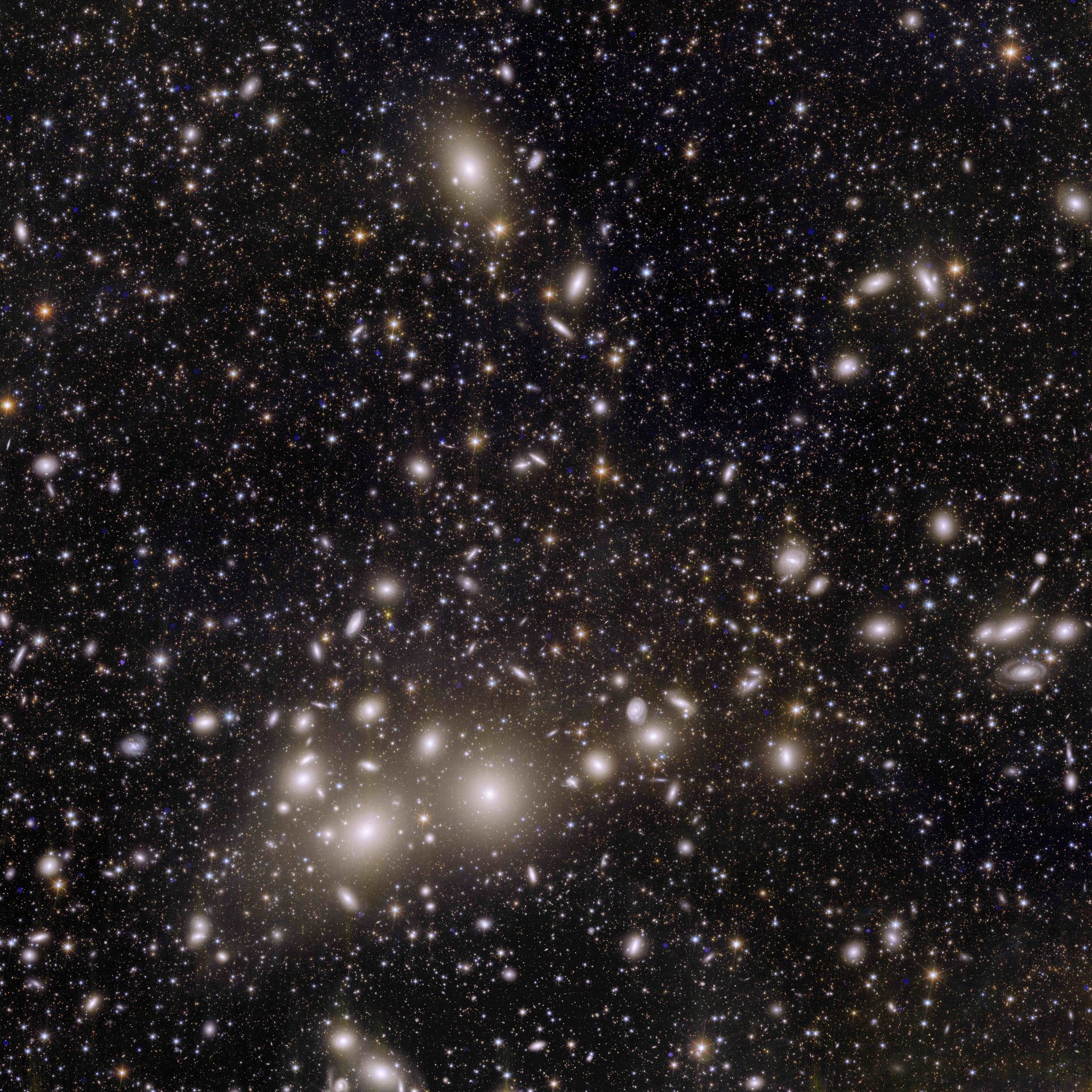Science
Astronomers Explore Distant Galaxies to Unravel Dark Matter Mystery

Research into the elusive nature of dark matter has taken an innovative turn as astronomers from the University of Copenhagen propose a new method to identify this mysterious substance using distant galaxies. Dark matter, theorized in the 1960s, is understood to constitute approximately 80% of the Universe’s total mass, yet its particle remains undiscovered. Various candidates have emerged over the years, with axions gaining prominence as a leading possibility.
Researchers, led by Oleg Ruchayskiy, an Associate Professor at the Niels Bohr Institute, have introduced a novel approach involving Active Galactic Nuclei (AGN). These are powered by supermassive black holes at the centers of galaxies. By harnessing the electromagnetic radiation emitted from these bright galactic cores as it traverses the magnetic fields of galaxy clusters, scientists aim to uncover how axions are produced.
The team’s findings are detailed in a paper titled “Constraints on axion-like particles from active galactic nuclei seen through galaxy clusters,” recently published in Nature Astronomy. Collaborators included researchers from the Institute for Astronomy and Astrophysics, Taras Shevchenko National University of Kyiv, and the Bogolyubov Institute for Theoretical Physics.
Using the Universe as a Particle Accelerator
Traditionally, scientists have relied on particle accelerators, such as the Large Hadron Collider in Geneva, to search for elementary particles. However, these facilities are not only costly but also time-consuming to construct. As a result, researchers are increasingly looking to cosmological phenomena, including neutron stars and colliding stellar remnants, as alternative particle accelerators.
In this latest proposal, Ruchayskiy and his colleagues suggest utilizing AGNs and the magnetic fields of galaxies. This approach poses a significant challenge, as any axions generated in the process would manifest as minor fluctuations masked by cosmic background noise. To address this, the team observed 32 supermassive black holes in distant galaxies, utilizing the gravitational lenses created by foreground galaxy clusters to enhance visibility.
By analyzing the data from these observations, the researchers detected a pattern resembling the signature of axion-like particles (ALPs). As Ruchayskiy explained in a press release from the University of Copenhagen, the combined data indicated the presence of gamma rays that would theoretically be released from axion production.
While these findings do not constitute definitive proof of axions, they represent a significant step forward in narrowing the search for this dark matter particle. Moreover, the study opens avenues for further exploration of other forms of radiation, such as X-rays, which could provide additional insights.
Postdoctoral researcher Lidiia Zadorozhna, a Marie Curie fellow at the Niels Bohr Institute and a lead author of the paper, remarked on the implications of their work, highlighting the potential for future research to deepen our understanding of dark matter.
As the quest for dark matter continues, the innovative techniques employed by Ruchayskiy and his team reflect the dynamic nature of astronomical research. Their work not only enhances our understanding of the Universe but also underscores the importance of interdisciplinary collaboration in addressing some of the most profound questions in science.
-

 Technology4 weeks ago
Technology4 weeks agoDiscover the Top 10 Calorie Counting Apps of 2025
-

 Lifestyle1 month ago
Lifestyle1 month agoBelton Family Reunites After Daughter Survives Hill Country Floods
-

 Education1 month ago
Education1 month agoWinter Park School’s Grade Drops to C, Parents Express Concerns
-

 Technology2 weeks ago
Technology2 weeks agoDiscover How to Reverse Image Search Using ChatGPT Effortlessly
-

 Technology3 weeks ago
Technology3 weeks agoHarmonic Launches AI Chatbot App to Transform Mathematical Reasoning
-

 Technology1 month ago
Technology1 month agoMeta Initiates $60B AI Data Center Expansion, Starting in Ohio
-

 Lifestyle1 month ago
Lifestyle1 month agoNew Restaurants Transform Minneapolis Dining Scene with Music and Flavor
-

 Technology1 month ago
Technology1 month agoByteDance Ventures into Mixed Reality with New Headset Development
-

 Technology1 month ago
Technology1 month agoRecovering a Suspended TikTok Account: A Step-by-Step Guide
-

 Technology4 weeks ago
Technology4 weeks agoMathieu van der Poel Withdraws from Tour de France Due to Pneumonia
-

 Technology1 month ago
Technology1 month agoGlobal Market for Air Quality Technologies to Hit $419 Billion by 2033
-

 Health1 month ago
Health1 month agoSudden Vision Loss: Warning Signs of Stroke and Dietary Solutions










